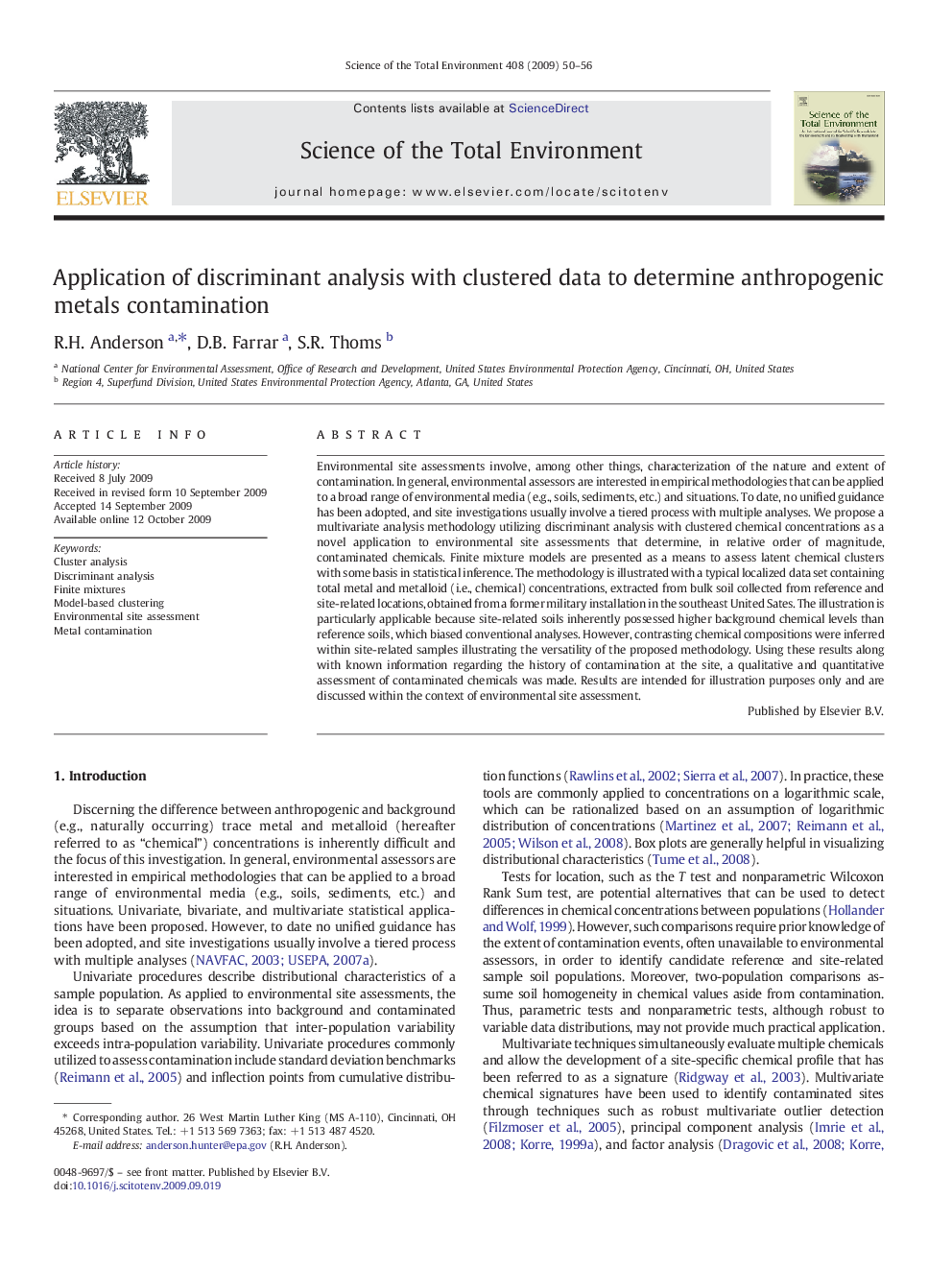| Article ID | Journal | Published Year | Pages | File Type |
|---|---|---|---|---|
| 4432261 | Science of The Total Environment | 2009 | 7 Pages |
Environmental site assessments involve, among other things, characterization of the nature and extent of contamination. In general, environmental assessors are interested in empirical methodologies that can be applied to a broad range of environmental media (e.g., soils, sediments, etc.) and situations. To date, no unified guidance has been adopted, and site investigations usually involve a tiered process with multiple analyses. We propose a multivariate analysis methodology utilizing discriminant analysis with clustered chemical concentrations as a novel application to environmental site assessments that determine, in relative order of magnitude, contaminated chemicals. Finite mixture models are presented as a means to assess latent chemical clusters with some basis in statistical inference. The methodology is illustrated with a typical localized data set containing total metal and metalloid (i.e., chemical) concentrations, extracted from bulk soil collected from reference and site-related locations, obtained from a former military installation in the southeast United Sates. The illustration is particularly applicable because site-related soils inherently possessed higher background chemical levels than reference soils, which biased conventional analyses. However, contrasting chemical compositions were inferred within site-related samples illustrating the versatility of the proposed methodology. Using these results along with known information regarding the history of contamination at the site, a qualitative and quantitative assessment of contaminated chemicals was made. Results are intended for illustration purposes only and are discussed within the context of environmental site assessment.
